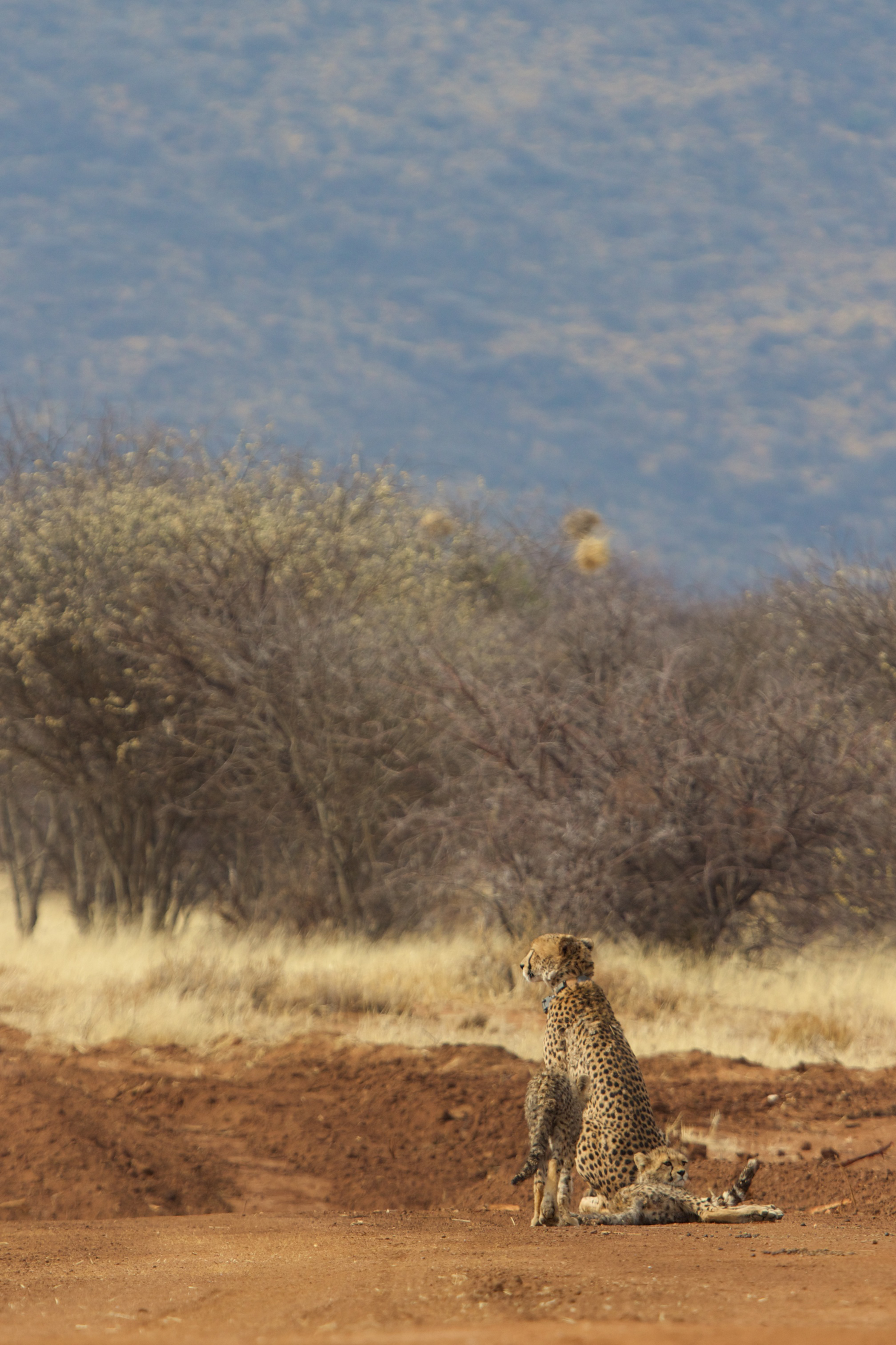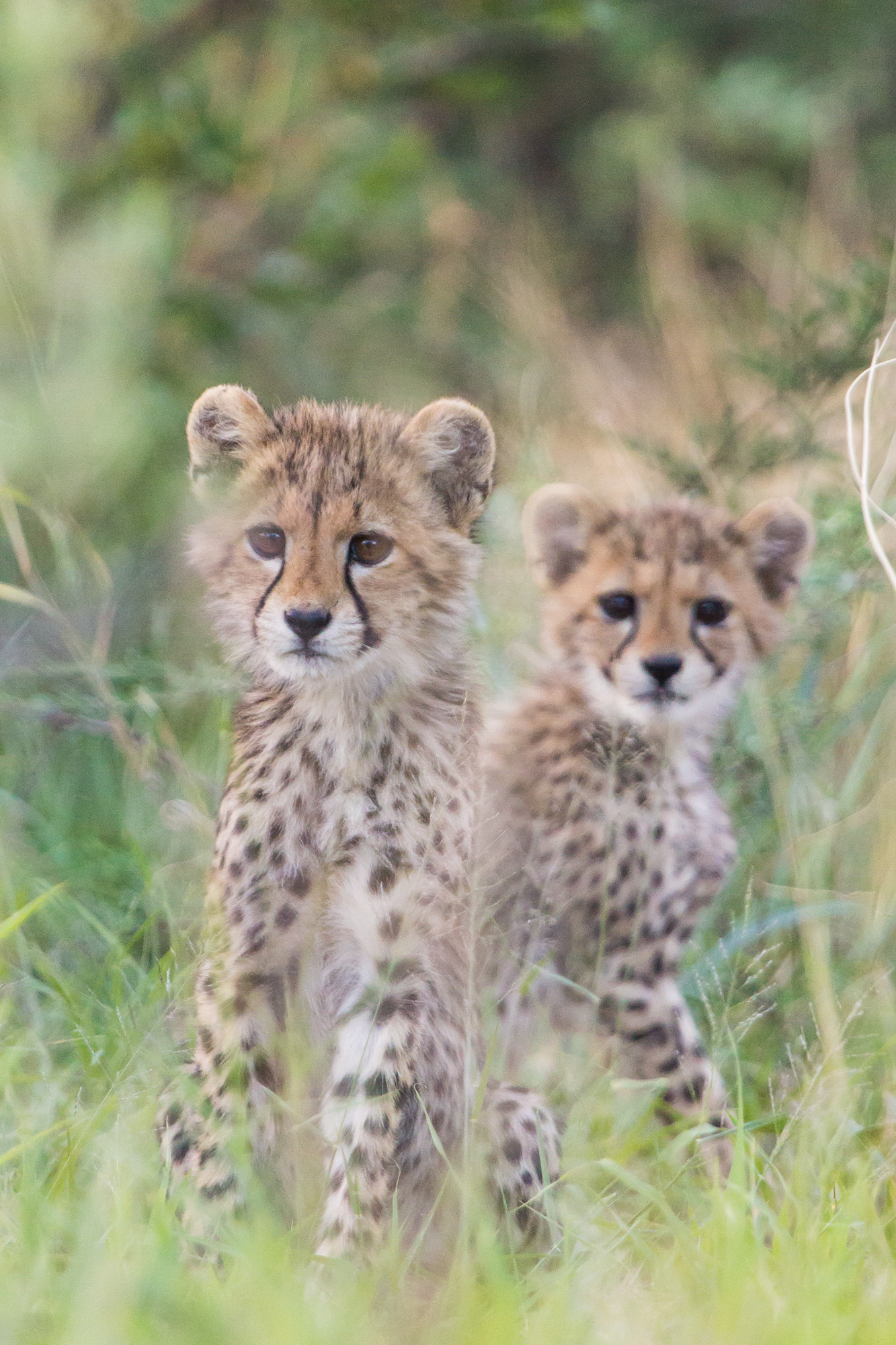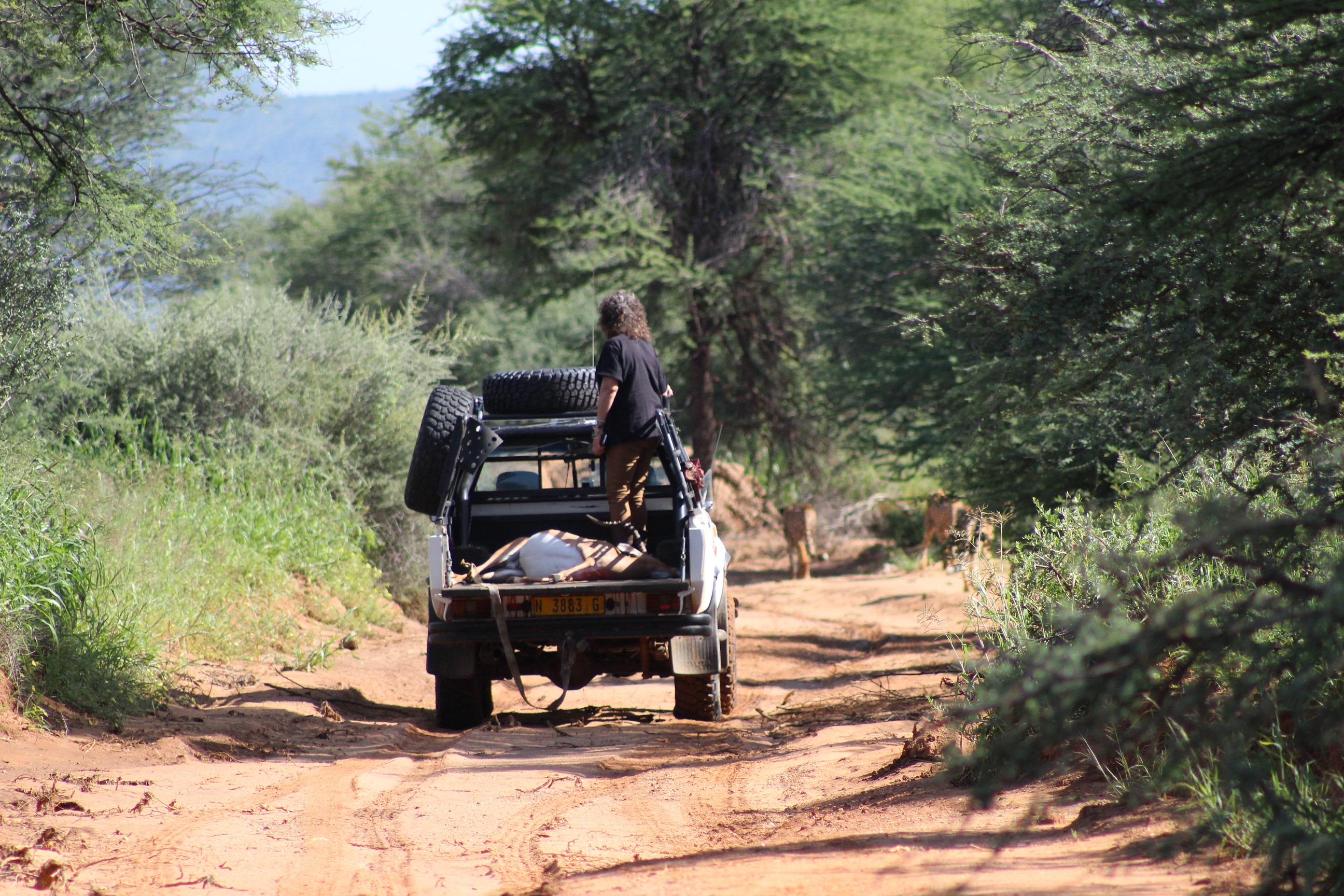The Science of Cheetah Conservation
First published in Sanctuary Asia,
Vol. 40
No. 11,
November 2020
Founded in 1990, the Cheetah Conservation Fund (CCF), Namibia, is dedicated to the conservation of cheetahs and their ecosystems, working with government bodies and other stakeholders in the continent. CCF has been conducting research on cheetah translocations in the early 1990’s and have translocated over 100 cheetahs, both within Namibia and to help support populations in South Africa. CCF is providing support to India’s Cheetah project committee in its ambitious proposition to translocate cheetahs to India’s grasslands once again. Abinaya Kalyanasundaram speaks to Founder and Director, Dr. Laurie Marker, about cheetah conservation in Africa, translocation protocols and the potential of the project to save the species and India’s grasslands in one go. Excerpts follow:
How well does the cheetah currently fare in the global level?
According to the study “Disappearing spots…” published in Proceedings of the National Academy of Sciences (PNAS), there are fewer than 7,100 cheetahs remaining in the world. CCF believes the number should be a little higher, so we say less than 7500. This accounts for young cheetahs and several micro-populations in Somalia, Somaliland, Djibouti and Eritrea that were not included in the PNAS study.
The cheetah is listed as vulnerable by the World Conservation Union (IUCN) Red List of Threatened Species with two subspecies, the Asiatic cheetah Acinonyx jubatus venaticus and the Northwest African cheetah Acinonyx jubatus hecki listed as critically endangered. The cheetah’s historical distribution in African covered a substantial portion of the continent, but as a result of range contraction in the last century, the cheetah is found in only 9 per cent of its historic range, of which 77 per cent is outside of protected areas. Acinonyx jubatus jubatus is the southern African cheetah, and its range includes a five-country polygon of Namibia, Botswana, South African, Zimbabwe and Angola. This is the largest population of wild cheetahs in the world. Smaller, fragmented populations of Acinonyx jubatus soemerengii, the East African cheetah, or Somali cheetah, are found in Ethiopia and the Horn of Africa countries, although their numbers have never been officially recorded.
The species is nearly extinct in its entire Asian range, with the exception of a remnant population in Iran, about 50 individuals or less.
Considering the proposal to relocate cheetahs to India, what aspects make a habitat suitable enough for cheetahs to survive? How much space would these animals need?
Our research shows that cheetahs require huge territories for home range, of about 1500 sq.km.
It is imperative that the threats responsible for the initial removal of cheetahs at potential release sites be addressed, or plans are in place to mitigate the threat. A habitat suitability study should be conducted to ensure there is sufficient vegetation to support viable prey populations to sustain the introduced cheetahs for the long term. The reintroduced population needs to be protected from anthropogenic threats, and the potential impact of unnaturally high inter and intraspecific competition needs to be managed.
Due to the cheetah’s large home ranges and tendency to occur in low densities, release sites need to be part of a larger suitable landscape or else metapopulation management becomes necessary.
Subtle characteristics such as adequate prey, prey species diversity, inter-specific large predator relations and human wildlife conflict will affect the reintroductions but the chances for success are in favor of the cheetah. The Kuno sanctuary offers promising suitable habitat such as the open woodlands and grasslands, which cheetahs favor for hunting. If the location is carefully selected – this is the job of the team in India – choose areas where chances for conflict is less high. In my report, I mention that surveys, conducted by Dr. M.K. Ranjitsinh and Jhala (2010) from the Wildlife Trust of India and the Wildlife Institute of India, identified a total of 10 potential sites for cheetah reintroductions and provided recommendations pertaining to each site. After conducting surveys in the areas, the WII short-listed three sites, Shargarh area in Rajastan, Kuno Palpur and Nauradehi Sanctuaries in Madhya Pradesh as possible habitats. In the areas I saw there was plenty of prey – prey density is a consideration – but this would need to be assessed again currently.

Photo: Eli Walker Jacomina
What could such an ambitious cheetah relocation achieve?
Cheetahs help maintain the grassland ecosystems which are critically endangered in India, and India is home to the largest free-roaming populations of livestock. The
National Forest Commission of Government of India also strongly recommends further protection of grasslands and associated flagship species. Among large carnivores, cheetah are likely to present the lowest level of conflict with human interests, as they are not a threat to human life and are most unlikely to predate large livestock.
Bringing back a top predator restores historic evolutionary balance, which leads to: a) Better management and restoration of cheetah habitat (grasslands, scrublands and open forest ecosystems), b) Conservation of cheetah’s prey and sympatric endangered species c) A top-down effect of a large predator that enhances and maintains the diversity in lower trophic levels of the ecosystems.
In the effort to reintroduce the cheetah in India, we aim to achieve both the biological objectives i.e. re-establish the ecosystem function role of the cheetah in representative areas of its former range, and contribute to the global effort towards the conservation of the endangered cheetah as a species as well as preserve its genetic diversity.
Would you know how and when the African and Asiatic cheetah diversified into separate subspecies?
The time of divergence between A. j. venaticus and A.j. jubatus was estimated at 4,700 – 67,400 years ago. The extent of the separation of A.j. venaticus from the African subspecies was not clear-cut. mtDNA data placed the split between A.j. jubatus and A. j. venaticus slightly more recently than that of A.j. jubatus and A.j. soemerengii, while microsatellite data suggested that the divergence with A.j. soemmerengii was the more recent event. It is important to keep in mind that divergence values between A.j. venaticus and the other subspecies could have been stochastically increased due to a postulated recent bottleneck in A.j. venaticus.
O’Brien et al (2017) estimates a time of divergence between A.j. venaticus and A.j. jubatus of approximately 6,500 year ago.

Photo courtesy: Cheetah Conservation Fund.
Would African cheetahs be able to adapt to Indian climatic conditions?
Cheetahs were at one time found throughout India, so they will be able to survive the climate conditions again now upon introduction. In the parts of Africa where cheetah are found, the temperatures can vary between very, very hot in the day to cold at night, and cheetahs can adapt to the seasonal shifts. They also contend with extreme rain and wet seasons in Africa, much like in India. Cheetahs do well in open savannahs and grassland environments, which they need for hunting. Cheetahs also benefit from high grass areas or bush areas that enable them to remain undetected while stalking prey. The habitat of the site in India will be an important consideration.
What are the factors to be considered for translocation success and individual survival?
Evaluating the success of cheetah translocations is complicated. The outcomes of many incidences are unpublished and those that are published potentially suffer from positive publication bias. Successes are more likely to be published than failures.
Success is generally based on reproductive success, but programs often use different definitions of this term. A meta-analysis of documented cheetah translocations determined that at least 727 cheetahs were translocated into 64 sites in southern Africa between1965 and 2010. Six of the 64 release sites were considered successful based on natural recruitment (births) exceeding adult mortality three years after introductions began. In many of the other projects, the number of cheetahs released was small and long-term monitoring was not conducted. If such long-term monitoring had been implanted and documented, additional sites might have been deemed successful.
The principal factor associated with reproductive success in a carnivore translocation program is the suitability of the release site for the target species, and in the case of free-range releases, the suitability of the surrounding area. Important characteristics of the release site include habitat and prey availability, the potential for intra and interspecific competition, and the animal’s ability to leave the site.

Dr. Marker at Erindi Re-Wilding. Photo: Bobby Bradley.
Can you provide examples of past cheetah translocations CCF has carried out?
In Namibia CCF began research on translocations in the early 1990’s and have translocated over 100 cheetahs in Namibia both within Namibia and to help support populations in South Africa. Our rehabilitation research began in 2005 and since then, we have rehabilitated over 60 orphan cheetahs in Namibia. Our research has provided a way forward for reintroductions.
The first translocated cheetahs in Namibia were released into fenced and unfenced nationally protected areas in the 1960s and 1970s in South Africa, to reintroduce or reinforce existing populations. Legislation passed in South African in the 1960s returned the right to utilize wildlife to landowners, paving the way for the development of private game reserves. In 1991, landowners in South Africa began stocking private reserves with cheetahs for tourism purposes, and cheetah translocations intensified during the mid 1990’s to mid-2000’s.
A trial conflict mitigation method, a compensation-relocation program was carried out in South African between 2000 and 2006. Cheetahs perceived to be predating on livestock were captured by landowners and relocated to private reserves and national parks. But vacant territories encourage immigration of new individuals, which may increase human- wildlife conflict. Removing predators is counterproductive to encouraging landowners to coexist with large carnivores, and the impact of repeated removals on wild populations was the primary reason for suspending this program in South Africa.
What are the safety protocols in place for cheetah translocations?
I drafted an action plan that outlines the logistical steps of bringing an initial small group of male and female cheetahs from southern Africa or other such place with cheetahs that could begin the reintroductions. The animals would first be placed in a one to two hectare, fenced holding area for inspection, where they would be fitted with satellite collars. The collars will enable scientists to track their movements and monitor their health status. After a short stay, they would be released into a larger enclosure, to become familiar with their new environment, where they would remain for two weeks to a month before being released into the sanctuary. Their movements would be monitored by research teams, and if an individual strays too far afield, the animal would be brought back into the sanctuary. The action plan also details instructions on feeding and care, and an assessment of breeding expectations.

Tracking the Inmates at Erindi, Namibia. Photo courtesy: Cheetah Conservaion Fund.
Elaborate on the human-cheetah conflict situation in Africa, and how one can plan to avoid the same in India.
Habitat loss along with loss of prey base directly threaten the cheetah’s existence, and they are also drivers of predation and farmer-carnivore conflict. Conservation organizations are often under pressure to translocate cheetahs that are believed to be responsible for livestock depredation, to prevent them from being killed, and as such, translocation is often considered a human method of conflict mitigation. However, the demand for cheetah removal outweighs the availability of suitable introduction sites and resources. A a result, the majority of cheetahs captured due to perceived or actual depredation on livestock have been relocated within existing cheetah populations, without clear reintroduction aims. These translocations, although potentially promoting gene flow and survival of individuals, cannot be viewed as “conservation translocations” as their benefit is largely restricted to individuals rather than populations.
To mitigate conflict between livestock farmers and reintroduced cheetahs in India, sustainable tourism should be promoted so that jobs and business opportunities for the local communities can be created. India can simultaneously boost its local economies and ensure its cheetah introduction is successful by taking this approach.
It is very important that enthusiastic and committed rangers and veterinarians be selected for the project. Through proper training, these persons will become India’s cheetah experts and be central to the success of the project. They will work with farmers to mitigate conflict.
How will CCF be supporting the Indian project committee? What is your opinon on the potential of the project.
Cheetah Conservation Fund (CCF) has offered to assist a committee of conservation experts appointed by the Supreme Court of India on a pilot programme to introduce the African cheetah to the landscape of India. While the country had long been part of the Asiatic cheetah’s historic range, the critically endangered sub-species, Acinonyx jubatus venaticus, was determined to have gone locally extinct in the early 1950’s.
The project is moving forward with assessments of key areas under consideration. Surveys to establish the prey base will begin once the wet season ends
I visited in 2010 to begin this project with a first assessment. I visited again this year in February, just ahead of the first pandemic lockdowns. I met with officials from the government of India and from local organizations that will be spearheading the project. CCF will play a supporting role, helping the team in India manage this process of reintroduction and looking after the welfare of the cheetahs involved in the reintroduction.
We are excited about the project and the hope it provides for long-term cheetah survival. Introduction will be a long process, but we know that our colleagues in India are up for the challenge. The potential for bringing the cheetah back into the wild, to allow the endangered grasslands and various other endangered species living on these grasslands to prosper, will be very worthwhile.




